Journal of Defense Management
Open Access
ISSN: 2167-0374
ISSN: 2167-0374
Research Article - (2021)Volume 11, Issue 4
Every year, the use of lasers for military purposes continues to grow. Many armies from different countries use different types of laser systems for their specific combat tasks and actions. Traditional troops of land forces, artillery, air defence, and aviation forces today recognize the laser as a major operational element in increasing the accuracy and effectiveness of combat operations. Lasers are also part of various training sessions in the educational process of military servicemen in military schools and universities. The purpose of this document is to provide the necessary and adequate information about lasers and their application to the army. An additional purpose of this report is to minimize the dangers associated with laser radiation when using lasers in military operations.
Laser; Combat lasers; Technology; Beam divergence; Reflectivity; Interaction; Continuous and pulsed lasing; Laser safety
The idea of using light as a weapon can be traced back to Archimedes. In the second century AD, the author Lucian wrote that during the siege of Syracuse (214-212 BC), Archimedes destroyed the enemy ships with fire. He may have used mirrors acting collectively as a parabolic reflector to burn the Roman ships attacking Syracuse. At the dawn of laser technology, French physicist Louis des Brailles said, “The laser has a great future. It is difficult to predict where and how it will find its application, however, I think that it is a whole new age of technology.” The laser has moved in 58 years from “a solution looking for a problem” to a key technology that contributes to major sectors of the world economy. Laser devices are the core technology in instruments performing vital functions in many industries including transportation, healthcare, and telecommunications.
History
• The first laser was developed in the 1960s and it was the beginning of a drastic change in the way the military sees war. During the Cold War, the US government relied on military strength through technological advances and, in the 1960s, multiplied its budget.
• In 1962, according to “Aviation Week and Space Technology”, the Department of Defence alone promoted laser spending about 1.5 million US dollars.
• The late 1970s and 1980s were difficult in terms of laser development in different types of weapon systems and their application. All branches of the military and industry have sought to master high levels of laser output power, beam management and the creation of appropriate optics.
• In 1999, the Department of Defence (US) officially recognized the lasers as future weapons and started research and development.
• In 2000, the Joint Technology Bureau for High-Energy Lasers was created to bring all laser technologies together to develop a comprehensive laser weapon system that could be used by the Air Force. With continued advances in laser development in recent years, modern laser weapon systems have become a reality and an important part of weaponry [1].
Types of military lasers
Today, several decades after the demonstration of the first laser in 1960 by T. Maiman, advances in a wide range of scientific disciplines have allowed laser technology to evolve and improve not only for civilians but also for military purposes. High-energy lasers cast intensively focused energy rays on the subject, typically powered by chemical fuel, electricity, or a stream of electrons [2]. Over the last 20 years, their application has accelerated rapidly in the commercial sector where they are routinely used for tasks such as cutting, welding, marking, engraving, and drilling holes. Lasers are also used by military and law enforcement agencies to define targets, transfer information, maintain target, determine distances. What types of laser sources exist in the military arsenal? The type of laser is determined by the lasing medium. The three categories in which lasers are usually classified are chemical, gas, and solid-state. A laser can also be continuous wave (CW) or pulsed. Each laser type produces a specific wavelength of radiation. It is important to note that different wavelengths of radiation interact with the atmosphere differently. A laser beam is either scattered or absorbed by air molecules, water vapour, or dust.
Longer wavelengths scatter less and are absorbed more than shorter ones; the sky is blue because the shorter blue wavelengths of light are scattered more than the longer ones. Gamma rays are so highly absorbed that they cannot propagate more than a few feet in the air. Thus, some laser wavelengths are scattered or absorbed more than the others. This makes laser wavelengths with minimum absorption better for use as directed-energy weapons since they propagate through the atmosphere better. For example, the carbon dioxide (CO2) laser is strongly absorbed by water vapour; therefore any use of such a laser near the ocean would be negatively affected. Near-infrared and infrared lasers have shorter wavelengths with negligible absorbance. The optimal laser choice, therefore, would be a wavelength-tuneable laser that could vary depending on the atmospheric conditions, such as the free-electron laser (FEL).
Chemical lasers
The first chemical laser, hydrogen fluoride (HF), was built in 1965, producing an output of 1 kW. Since then, the Department of Defence (DoD) has been interested in the research and development of more powerful chemical lasers for weapon applications. Subsequently, in 1968, the base demonstration laser of the Agency for Advanced Research Projects (DARPA) produced 100 kW, and in 1975 the naval-ARPA chemical laser (NACL) produced 250 kW.
Solid-state lasers
Solid-state lasers (SSLs) use a solid laser medium, such as glass or crystal, or gemstone (ruby, etc.). Rare-earth impurities such as Cr (Chromium), Nd (Neodymium), Er (Erbium), Ho (Holmium) or Ti (Titanium) are placed in the crystal (active medium). Chromium is the material used in ruby crystals. Nd (neodymium) is used in the most used lasers, namely the Nd: YAG lasers. For pumping the active medium (crystal), a flash lamp, an arc lamp, or another laser is used. This type of solid-state lasers operates at 1064.5 nm and can operate both in pulse mode and CW mode. A great advantage of these lasers is the wide range of wavelength and pulse duration. The power level can reach megawatt when using Q-switching to achieve short pulse lengths. Different interactions with laser and other crystalline materials can double the electromagnetic frequency, which will reduce the wavelength by half, resulting in the laser beam in the visible range of 532 nm (green). The wavelength can be further divided into three or four, making this laser from the near-infrared to ultraviolet wavelength. These lasers are usually used to indicate targets, measure distances, and so on. Other advantages of these lasers are that they can be made very small, user-friendly, cheap and battery-powered. The characteristics of SSL are shown in Table 1.
Modern fibre laser is a variety of solid SSL lasers. It is powered by electricity that excites diode lasers pumping the active medium (glass fibres). This makes such lasers extremely mobile and subject to support on the battlefield. In most cases, the active medium is a fibre treated with rare-earth ions such as Er3+, Nd3+, Ytterbium (Yb3+), Thallium (Tm3+) or Praseodymium (Pr3+). The principal scheme of a fibre laser is shown in Figure 1.
Figure 1. Fibre laser – Principal schema [3].
Fibre lasers have proven to have many benefits over traditional SSLs. They are resistant and do not require a cleanroom to operate or to be maintained, as most other laser systems do.
They are also extremely efficient; however, they cannot operate well in all weather conditions. One example is the IPG CW fibre laser that produces high-quality laser beams causing damage to materials and components by thermal heating and burn-through. The Naval Surface Warfare Centre, Dahlgren Division (NSWCDD) purchased eight commercially available 5.5 kW IPG lasers, where two multimode (seven fibres) lasers are housed per cabinet. This type of laser is easy to mount due to the flexible fibres (Table 1).
| Laser Type | Wavelength, µm | Power | Output | Purpose |
|---|---|---|---|---|
| Deuterium Fluoride (DF) | 3÷4.2 | 0.01÷100 MW | CW and Pulsed | weapon |
| Hydrogen Fluoride (HF) | 2.6÷3 | Up to 150 MW | CW /Pulsed | weapon |
| Krypton Fluoride (Excimer) | 0.249 | 100 W | Pulsed | weapon |
| Nd: YAG 1.06/0.532 0.5÷1000 W CW /Pulsed Atmospheric Communication | ||||
| Q switched | ||||
| Nd: YAG | 1.06 | 0.5÷1000 W | Pulsed | LFT/LTD |
| Nd: YAG | 1.06 | 0.5÷1000 W Pulsed LIDAR Q switched |
||
| Raman shifted. Nd: YAG |
1.54÷1.55 | >10 W | Pulsed | LIDAR |
| Nd: YAG | 1.06 | 1 J =10s *1W | CW/Pulsed | Sensor |
| Nd: YAG | 1.06 | 1 J =10s *1W | CW/Pulsed | Illuminator |
| Tuneable Laser (Titanium: Sapphire) | 0.66÷1.18 | 1 J =10s *1W | CW | Atmospheric Communication |
| Fibre Laser | Variable | 10kJ=10s*1kW | CW | weapon |
| GaAs (Gallium -Arsenide) | 0.85 | >10 W | CW/Pulsed | LIDAR |
| GaAs (Gallium -Arsenide) | 0.83 | Up to 5 W | Pulsed | Illuminator |
| In GaAs (Indium-Gallium-Arsenide) | 1.55 | Up to 5 W | Pulsed | Illuminator |
| Vertical-cavity surface-emitting laser | 1.06 | 5 mW÷150 kW | CW | Illuminator |
| He-Cd (Helium Cadmium Laser) | 0.4416 | 1 mJ=10s*1mW | CW | Underwater Communication |
| Ar (Argon Laser) | 0.514 green 0.488 blue |
0.1÷5 W | CW | Underwater Communication |
| CO2 | 9 - 12 | >100 kW | CW/Pulsed | weapon |
Table 1: Effects of a laser beam on the eye (from UCELA Laser Safety Line 2009).
Gas lasers
Gas lasers are also widespread in the industry. They use pure gas or gaseous mixture for an acoustic environment in the optic resonator. A typical gas laser contains a tube filled with the working gas and there is a pair of mirrors at the edges of this tube. At one end of the tube, the radiation leaves the resonator. Most gas lasers use electric current to cause gas discharge in the active substance. Helium-Neon (He-Ne) laser is a very well-known gas laser. It produces a bright red, continuous beam of low power. It is used for many applications, such as scanning, alignment, measurement, and stabilization devices. University students use them in optical training laboratories. Larger lasers contain He-Ne inside the beam path, as well as checking beam alignment. He-Ne lasers are relatively inexpensive and very user-friendly. They can work continuously for thousands of hours.
CO2 lasers are also classified as gas lasers. These lasers were the earliest truly high-power lasers and have been among the most crucial lasers used in the research and development of high-energy laser (HEL) weapons. In the industry, the more powerful CO2 lasers are used for welding, drilling, and cutting. Many CO2 lasers vary in pumping design.
CO2 lasers work by burning hydrocarbon fuel (like kerosene or methane) in oxygen or nitrous oxide. The hot gas flows through a comb of nozzles, expands quickly, and achieves population inversion. The gas then flows through an optical resonator at supersonic speeds, resulting in stimulated emission and a laser beam. CO2 lasers have been researched for use as non-lethal weapons. The wavelength produced by a CO2 laser is also absorbed by the glass. For example, the beam does not penetrate a windshield. Thus, shooting a CO2 laser at a vehicle’s windshield could deter a threat by damaging the windshield or by causing a dazzling effect to reduce the visibility of the driver, while not reaching the driver at all.
Laser characteristics
The output power of modern lasers ranges from mW to MW (when delivering constant output power), or even petawatts (1015 W) for short-pulsed lasers, and the wavelengths emitting from the ultraviolet waves (UVC) to the far-infrared (IRC) waves of the electromagnetic spectrum (Table 1). In military terms, lasers with continuous output powers greater than 20 kW are classified as High Energy Lasers (HEL). Output powers in the range of kW or even MW allow the creation of laser beams with potential harmful intensity over distances of up to several hundred kilometres. These beams can be used to heat targets, which then may lead to structural failure of the target object. Besides, falling into the eyes of the opposing army can lead to irreparable damage and blindness.
Advantages of laser weapons
Why are lasers so attractive for military purposes? The answer to this question lies in the advantages they offer to conventional weapons. The advantages of using laser weapons in military operations, depending on the tasks to be solved (the objectives set) and the tests that have been carried out, have shown the following:
• Very fast and can strike at targets with the speed of light (300,000 km/s).
• Targeting without waiting (both in height and in the side directions).
• Quick targeting opportunities, agile and in a short period can intercept several targets or one single target multiple times (compared, for example, with missiles or projectiles already launched to reach the goal).
• Absence of the possibility to shoot down a striking beam (as a projectile or a rocket) cannot be distracted by a heat trap, is resistant to jamming systems (resistant to electromagnetic interference), etc.
• Low price in comparison with some classical means of destruction (exceptionally cost-effective when compared to conventional ammunition, with each laser shot costing as little as one US dollar).
• Ability to control the shot power that allows you to hit different targets at different distances.
• High localisation of destruction, which makes it possible to use such systems, for example, in urban conditions without incidental losses.
• The relative silence of the shot and invisibility for the eyes (for IR, UV ranges, especially pulsed lasers).
• Logistic support of the combat use of laser weapons (especially based on solid-state lasers) is much simpler than for several classical systems of defeat.
Laser technology is introduced in military affairs according to specific guidelines that have been developed in the following areas:
• Laser location (ground, air, underwater).
• Laser communication.
• Laser navigation systems.
• Laser weapons.
• Laser systems for missile defence and anti-satellite protection.
Due to the limitations of the volume of the report, we are discussing only a few specific laser applications for military purposes (Figure 2).
Figure 2. Military laser communication: illustration of spatial diversity.
According to their purpose, laser weapons can be classified as strategic and tactical. Strategic or high-power laser weapon systems are space or ground-based that intercepts enemy intercontinental ballistic missiles and satellites. Tactical or low-power laser weapons are generally used for short-range air defence or self-defence for individual war fighter or weapon platforms (Figure 3).
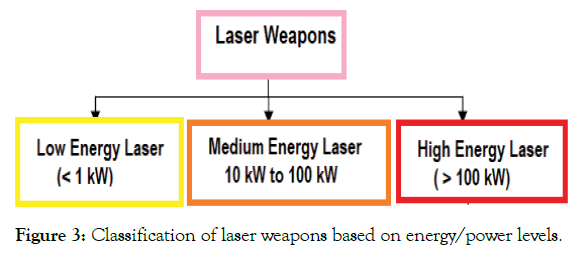
Figure 3. Classification of laser weapons based on energy/power levels.
Laser weapons are classified based on their energy/power levels: high, medium, or low energy weapons (Figure 3). They are distinguished into three broad areas ranging from jamming of sensors to the destruction of optoelectronic devices and ultimately destruction of the complete mechanical structure [3].
Low energy lasers: They usually give less than 1 kW of power and are used in weapon simulation systems for training or for jamming the sensors in communication systems or can be used in anti-personal mode against the human eye. The use of these laser weapons for future military tactical operations will radically change the situation on the battlefield. These lasers are more silent and less detectable by the enemy.
Medium energy lasers: They produce 10 kW to 100 kW of power and are used for the destruction of optical or optoelectronic devices on the ground or space-based targets.
High-Energy Lasers (HEL): They generate more than 100 kW of power and is used for anti-aircraft or anti-missile systems. The main components and modules from which one HEL is constructed are shown in Figure 4. Having the speed of light, these lasers provide a short engagement time for the target, depending on the terrain and speed of the target (Figure 4).
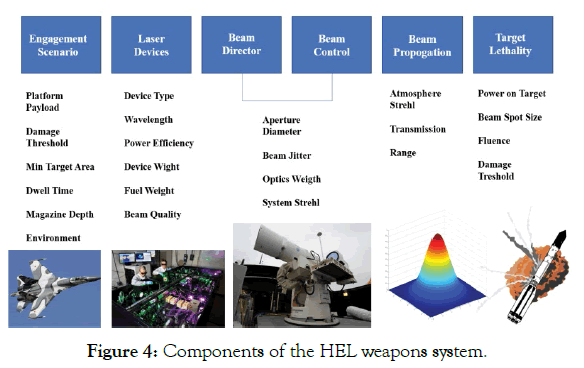
Figure 4. Components of the HEL weapons system.
Today many countries, such as the USA, Russia, China, India, and Germany, are carrying out extensive research on HEL for navy or air defence purposes [4-6]. High-energy lasers, due to high costs and bulkier structure, will probably be limited to the protection of costly high-technology targets such as air and navy bases, high-level command posts and aircraft carriers.
As previously discussed, when capable of generating higher power levels, ranging from kW to MW, any laser can be used as a laser weapon. However, these lasers have special needs to operate efficiently, i.e., cooling requirements, laser fuel storage requirements, environment, and personal safety requirements, pointing and tracking requirements. For these lasers, the cooling requirement is essential to compensate for the enormous amount of heat generated by generating the laser beam in the resonator. If the cooling devices are not properly made, the heat will weaken the power of the laser beam, which will affect the interaction of laser radiation with the target substance. These weapons require an adequate supply of fuel or electricity to allow the simultaneous impact of multiple target commitments (Figure 5).
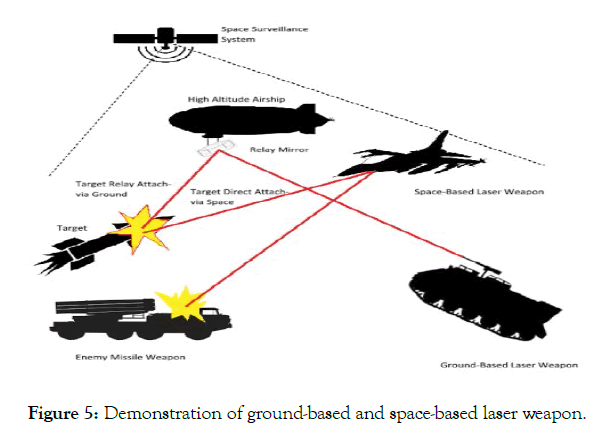
Figure 5. Demonstration of ground-based and space-based laser weapon.
Laser weapons can be either ground-based or space-based as depicted in Figure 5. Ground-based laser weapons utilize multiple relay mirrors in space to destroy an intercontinental ballistic missile. These relay mirrors are used to extend the range of highenergy laser weapons, as it compensates for the limiting factors caused due to atmospheric absorption, turbulence, and curvature of the Earth. A high-energy laser beam from a ground station is relayed to a missile with the help of these mirrors. Since the beam must pass through the atmosphere to reach the constellation of relay mirrors in space, the energy requirement of ground-based lasers is substantially higher than space-based lasers, leading to greater losses due to atmospheric transmission, thermal blooming, and larger distances. The use of bifocal relay mirrors effectively puts the laser source at the mirror. This increases the intensity on the target at a specific range or extends the range of the laser while retaining the original brightness or intensity. These lasers have evolved during the strategic defence initiative (SDI) era but have not received significant emphasis due to the variety of technical challenges involved relating to its design and development [7].
The main types of lasers that are good candidates for laser weapons include chemical laser, solid-state lasers, free-electron laser (FEL), fibre laser, and liquid laser [8-10]. Each of these lasers has unique characteristics that make it suitable for certain operational applications.
Chemical lasers are the most mature laser weapon technology that generates high power from exothermic chemical reactions to strong laser IR radiation. Characteristics of some of the most popular lasers, e.g., Hydrogen fluoride (HF) laser, deuterium fluoride (DF) and chemical oxygenated iodine laser (COIL), have been described earlier in this article (Table 1). Following the success of the first 1 kW HF laser in 1965, diverse military organisations have been interested in producing more powerful lasers (> 100 kW) for tactical missions. These lasers are somewhat bulky because they require a large amount of chemical fuel and a good cooling of the resonator for their proper functioning. Various high-energy chemical laser weapons have been demonstrated over the past 45 years including MIRACL [11], ALPHA and Navy-ARPA chemical laser (NACL). ALPHA HF laser is a small-sized MW power laser for space applications. Tactical high-energy laser (THELDF chemical laser), Mobile THEL (MTHEL-DF chemical laser) and advanced tactical laser (ALT-COIL with beam control) are compact field-ready weapons that have successfully demonstrated their capabilities of shooting down short and medium-range targets. With some modifications to THEL, a deployable ground-based directed energy weapon, known as a high-energy laser for rockets, artillery, and mortars (HELRAM), is used for short-range military threats.
Laser equipped aircraft like an airborne laser (ABL) [12] is equipped with multiple laser systems: primary laser (COIL) with MW power for target destruction, illuminating laser for ISR and high precision laser for target tracking beam control systems. ABL can detect the missiles shortly after the cloud break and provides a real-time warning about its launch and location to the rest of the forces. It also provides trajectory information and impact point predictions shortly after burning out (Figure 6).
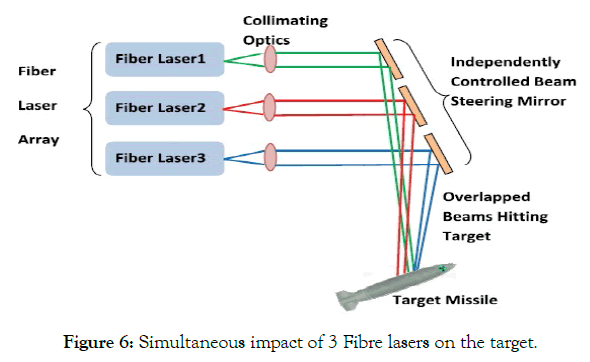
Figure 6. Simultaneous impact of 3 Fibre lasers on the target.
Solid-state lasers: fibre laser architecture for high power and longrange directed energy weapon. This type of laser offers a very good ratio of size, weight, and power (SWaP) and is therefore considered a portable laser weapon. Boeing's HEL-MD is a 10-kW solid-state fibre laser with around one-micron wavelength designed to destroy rockets, artillery, mortars, and drones (RAMD) from ground-based vehicles [13]. Fibre lasers are more compact and require less power to maintain the beam quality than any other HEL design. Its beam control system comprises mirrors, high-speed optical sensors, processors, and adaptive optics system to precisely align the beam onto the target in real-time. A single-mode fibre laser is capable of producing 10 kW of power sufficient to shoot down any missile at an approximated distance of 1.5 km. To further achieve the required power levels, multiple fibre lasers can be combined so that a high power overlapped beam, from an individual laser, strikes the target. Figure 6 shows the incoherent combining of fibre lasers, which is individually controlled by a beam steering mirror, to direct each beam onto the target. Such fibre lasers are highly efficient, robust, and compact and require low maintenance, which makes them suitable for tactical energy-directed military applications.
The Laser Weapon System (LaWS) is a navy defence system that has successfully demonstrated the shoot down of a UAV from a HEL weapon deployed on a small ship. The system consists of an array of solid-state lasers, generating IR beams at a varying output power, in the range from 15 to 50 kW, to warn or damage the designated target. The Office of Naval Research (ONR) will now extend the experimentation by performing a shipboard test with a 150-kW laser weapon system, shortly [14] (Figure 7).
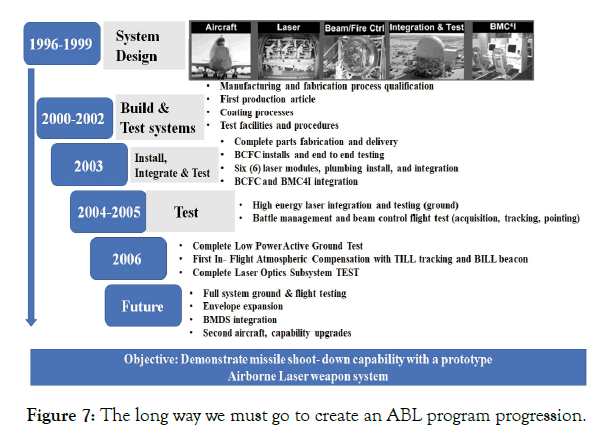
Figure 7. The long way we must go to create an ABL program progression.
Chemical oxygen-iodine lasers (COIL) used in Airborne Laser (ABL) to attack ICBM and Advanced Tactile Laser (ATL) to defeat armoured vehicles.
What is the future trend for the development of laser weapons?
Laser weapons are efficient and powerful countermeasure utilities against any form of external threat, including ground-based or space-based military menaces. They offer several advantages over conventional weapon systems. Since laser beams travel at the speed of light, they provide near-real-time transfer of information to the soldiers immediately after the target detection. The coherence of laser beams provides highly focused energy which causes physical destruction to the structures, by converting laser energy into thermal energy.
Now-a-days, chemical lasers are replaced by solid-state laser systems with semiconductor (diode) pumping. A huge advantage of chemical lasers is the fact that the laser power does not require any cumbersome and heavy power plant because the chemical reaction is the source of energy. The main disadvantage of these systems is environmental hazard and bulkiness of the structure.
Since these devices are constantly powered or reloaded by chemical/electricity energy storage, they can engage multiple targets with fewer moving mechanical parts. Lasers weapons provide promising and cost-effective solutions for tactical missions, unlike conventional ballistic missiles. The incremental cost per shot for ballistic missiles is essentially the cost of the ammunition expended, whereas, on the other hand, laser weapons expend only energy. Hence, the cost per shot equals the cost of the chemical fuel or the fuel required to generate the electricity, which is much less as compared to conventional weapons. Besides, these directed energy weapons provide exceptional striking accuracy, which results in little collateral damage and allows the use of lasers for lethal or non-lethal applications. Figure 8 demonstrates the applications of laser weapons for ground, space and maritime environments (Table 2).
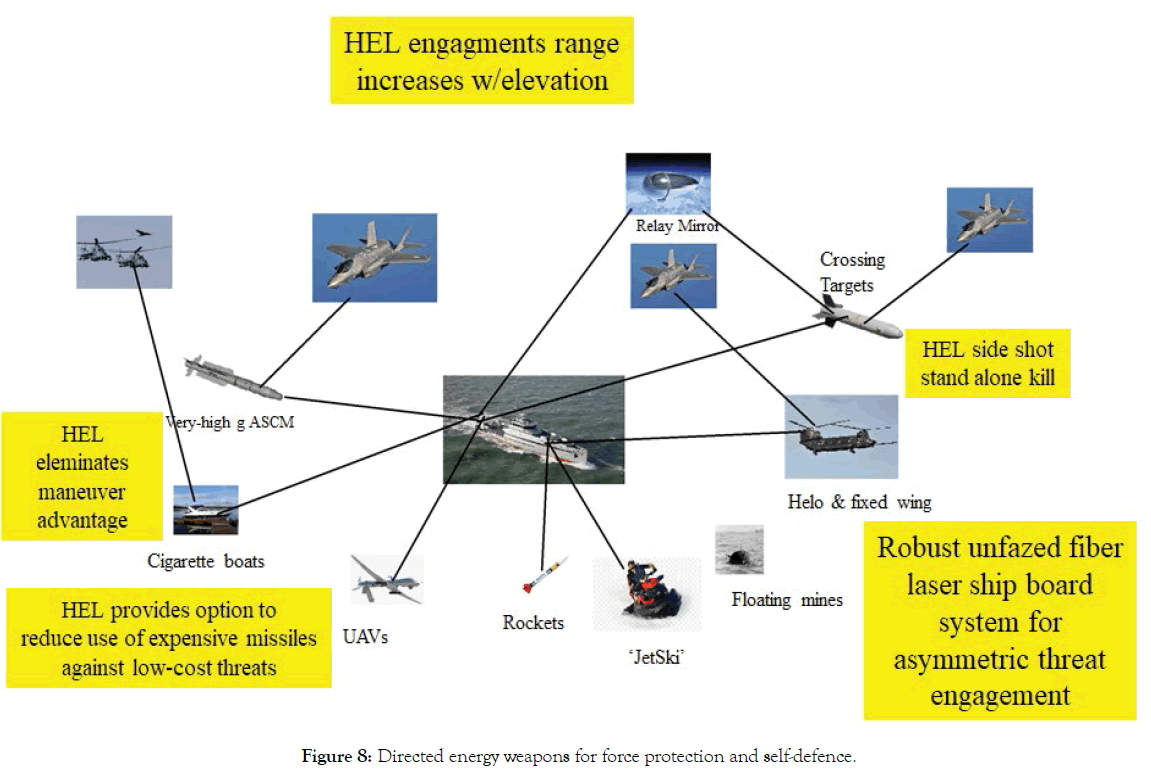
Figure 8. Directed energy weapons for force protection and self-defence.
| Wavelength | Area of Damage | Pathological Effect |
|---|---|---|
| 180-315 nm (Ultraviolet UV-B, UVC) | Cornea; Deep-ultraviolet light causes accumulating damage, even at very low power |
Photo keratitis; Inflammation of the Cornea, similar to sunburn |
| 315-400 nm (Ultraviolet UV-A) |
Cornea and Lens | Photochemical cataract; Clouding of the Lens |
| 400-780 nm (Visible) |
Retina; Visible light is focused on the Retina | Photochemical damage; Damage to Retina and Retinal burns |
| 0.78-1.4 μm (Near Infrared) |
Retina; Near IR light is not absorbed by iris and focused on the Retina |
Thermal damaged to cataract and Retinal burns |
| 1.4-3.0 μm (Infrared) |
Cornea and Lens; IR Light is absorbed by transparent parts of eye before reaching the Retina |
Aqueous flare; Protein in aqueous humor, cataract, Corneal burn |
| 3000-10000 nm (Far Infrared) |
Cornea | Corneal burn |
Table 2: Effects of a laser beam on the eye (from UCELA Laser Safety Line 2009).
To use laser beams as weapons, a significant amount of laser power is necessary. The required output power is determined and strongly depends on the type and distance to the target. On the other hand, researchers of the new laser weapon must adhere to the international protocol on dazzling laser weapons that prohibits the use of dazzlers to blind the enemy. This is a great paradox because the minimum power that causes eye damage can be very low. Dazzler lasers, for example, are designed to affect the human eye temporarily or permanently [15]. Since the eye is a very sensitive human organ, these weapons need only a small amount of output power. Within a few meters, even an output power of several miles may damage the eye because the eyes focus the beam on the retina. Blinding lasers were used in the Falklands conflict and the war between Iran and Iraq in the 1980s [16].
Blindness can also occur when working with powerful and moderately powerful lasers at occasional reflections or deviations of the laser beam. The laser effect on the eye in this case may be multifaceted: besides the burning of the retina, the laser pulse can also destroy the blood vessels in the eye or cause the process of slow retinal decay and others [17,18] (Table 2 and Figure 9).
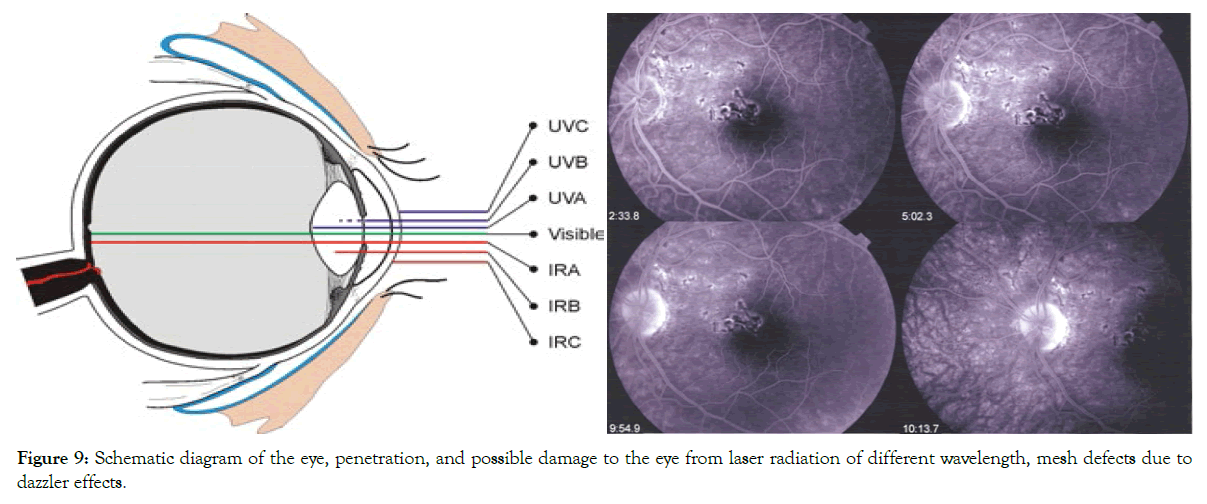
Figure 9. Schematic diagram of the eye, penetration, and possible damage to the eye from laser radiation of different wavelength, mesh defects due to dazzler effects.
In 1995, these weapons were officially banned according to the International Humanitarian Law. However, if the aim is to destroy hard targets rather than to blind the enemy, the laser requires an output power that is many orders of magnitude higher than that of blinding lasers. As mentioned above in this article, many countries and research institutes develop and test lasers with continuous output power over 20 kW or impulse energy over 1 kJ [19]. As stated above, the use of blinding laser weapons is illegal under International Humanitarian Law. These weapons violate the Fourth Protocol (1995) to the Convention on Prohibitions, or Restriction on the Use of Certain Conventional Weapons Which May be Deemed to be Excessively Injurious or to Have Indiscriminate Effects. This protocol outlaws the use and transfer of laser weapons that are intended to cause blindness. Additionally, the signatories are obliged to take the necessary steps to prevent blindness caused by other laser weapon engagements [20]. However, the protocol is not applicable if collateral blinding occurs because of military laser applications that are otherwise considered legitimate. Consequently, the protocol might apply to High Energy Lasers (HEL) weapons only if they are specially designed for blinding purposes. Nevertheless, the protocol seems to have had some positive effects so far. The protocol is the first step towards a comprehensive ban of all laser weapons. This would be the first step towards preventive arms control, a concept that was developed to ban the introduction of new destabilising weapon systems [21]. Whether and to what extent a complete ban is realistically achievable is another question.
Laser weapon systems have seen rapid development in recent years. Dedicated R&D has advanced the state of the art considerably. What was unimaginable only a few years ago, has become a reality today. Accordingly, if appropriate research and development strategies are applied, war fighters soon will have additional weapon options to choose from for dealing with a spectrum of threats and contingencies. In this paper, we have discussed various prospects of laser technology for tactical military applications. Laser technology addresses the need of today's battlefield that requires the ability to detect the target at longer distances and exchange a massive amount of information in a secure and timely manner. Lasers have revolutionized warfare as accessories to high-energy weapons. This technology serves as a powerful tool of war fighters when used as battlefield illumination elements, rangefinders, target designators, LIDARs, communication systems, power beamers or active remote sensors. Because of the high frequency of the laser system, these devices provide broadband capacity links with Swap benefit and have a remarkable angular resolution, which is very crucial for tactical laser device deployment. Besides higher bandwidth, the laser device is used where anti-jam is required or RF spectrum is not available. The use of laser, as a directed high-energy weapon, requires a sufficient amount of power in MW to cause substantial damage to a distant target. Even though laser weapons are used to destroy targets, they can also cause damage to the user if handled improperly. These weapons require sufficient cooling between firing; therefore, they cause certain problems for ground vehicles, especially for hand-held laser weapons. Also, during highly turbulent weather conditions including heavy smoke, dust or humidity, these weapons may be deflected from the actual path and can miss the target. The military is still working on many engineering problems, to compensate for the beam wander due to bad weather conditions, movement of the target or motion of the platform. Further, these HEL poses a significant threat to sensors and military equipment on the battlefield. These sensors may require a protection mechanism such as a laser jamming feature built into the sensor platform to ensure the reliability and integrity of these devices in a hostile electromagnetic warfare environment. Also, quantum computing and cryptography are game-changing technologies in cyber warfare, possibly safeguarding tactical communication against eavesdroppers. With all this ongoing development and current capacities, laser technologies will dominate the battle space in future. When working with all the new developments and applications of laser weapons, we must stick to the global protocol on laser dazzling, which prohibits the use of lasers specially designed for dazzling personnel but also by accidental deviations of the radiation to the unintended directions, thus creating a risk of damaging the health of unrelated people and other objects.
Citation: Lyubomir L, Edmunds T, Risham Singh G (2021) Applications of Laser Technology in the Army. J Defense Manag. 11: 210
Received: 07-May-2021 Accepted: 17-May-2021 Published: 25-May-2021 , DOI: 10.35248/2167-0374.21.11.210
Copyright: © 2021 Lazov L, et al. This is an open access article distributed under the term of the Creative Commons Attribution License, which permits unrestricted use, distribution, and reproduction in any medium, provided the original work is properly cited.